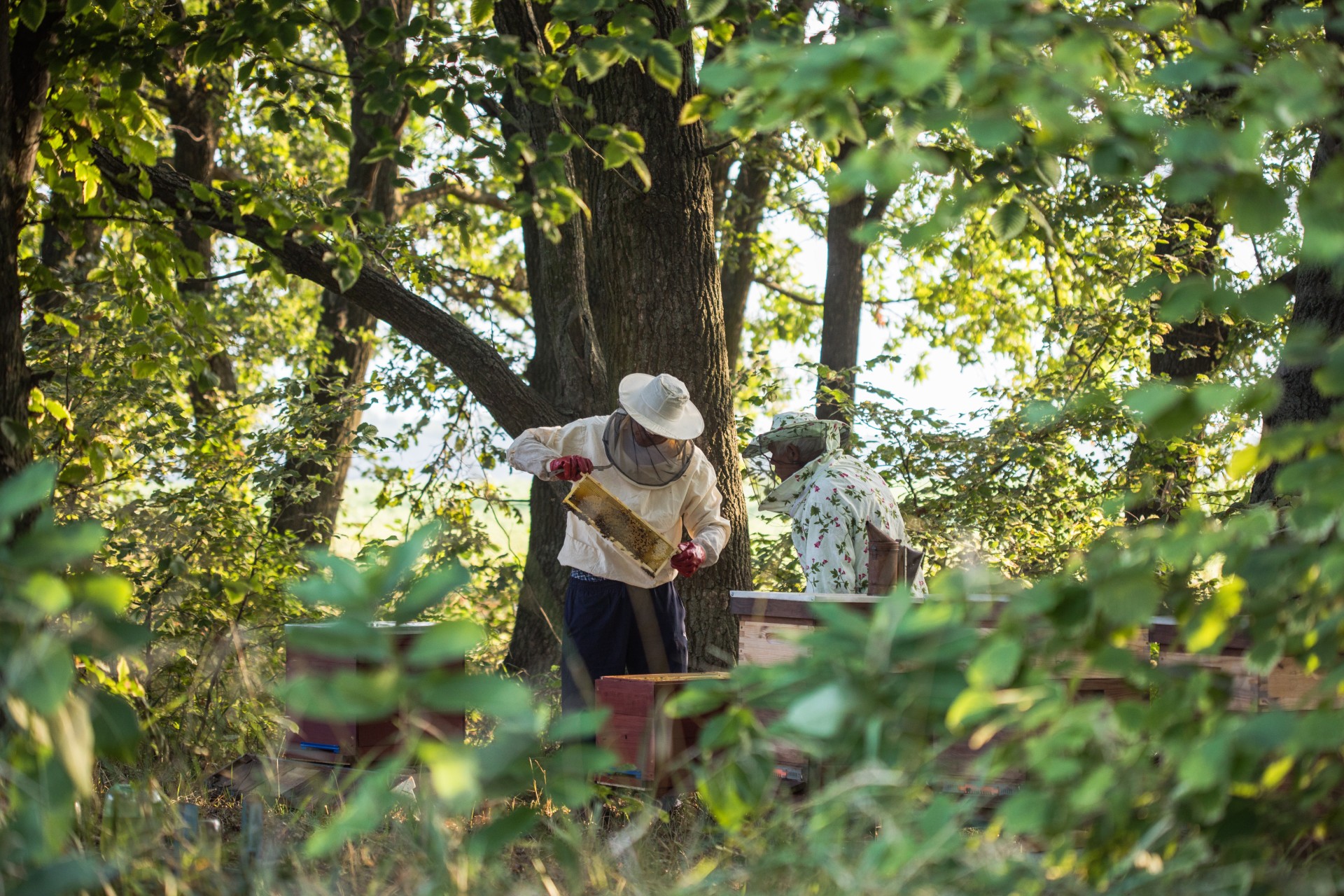Beekeepers must undoubtedly be persistent and dedicated to their hobby. Persistence is most often met with success, but beekeepers face many challenges. Beyond the simple fact that bees have stingers and are wild, local beekeepers are facing more and more obstacles in keeping healthy hives. Among the most prevalent challenges are finding a suitable location for the hives that offers diverse foraging for the bees, sufficient water sources while wielding away threats to the beehives and having forethought on how to protect hives through climate change, extreme weather, and fires. Beekeepers are also the sole protectors of beehives from outside threats, like wasps and ants. As one can see, beekeeping is not for the faint of heart.
First Things First: Finding Suitable Terrain for the Beehives
When a beekeeper decides to dive into this fantastic opportunity, the most pressing question is where to put the beehives. An apiary must be thoughtfully placed where bees can access a wide range of flowering plants and trees. Wildflowers do well, but vegetable plots, grain plants, and orchards in the area also make for an array of choices for bees. Bees have been shown to be healthier with a broader range of options to collect nectar and pollen. Additionally, various food sources ensure that bees have food throughout the year, even during harsh winters and scorching summers.
Local plants must provide carbohydrates for the bees so they can make honey and get the protein they need to be healthy. Although some plants provide plenty of nectar, that is not always enough for honey production. Some honey without a range of options may end up bitter. Local beekeepers, like D-Tek, have been able to successfully home their beehives and ensure they have diverse resources so they can harvest sweet, delicious honey year after year. Healthy bees equal strong swarms and lots of honey production.
Plenty of Water is Essential
Bees, like all living things, need water. As everyone knows, water is a limited resource, and this is yet another challenge that local beekeepers face. Bees require water to breed and regulate temperatures inside the beehives. Bees tend to like water warmed by the sun’s rays, but they must be able to perch to drink because bees don't swim. When beekeepers use drums to collect water for their beehives, they often place corks or wood that floats and provide a safe space for bees to sit while drinking. There are many ways that beekeepers provide safe watering spots for bees because providing water is critical to their health and existence.
Staying Ahead of Climate Change, Extreme Weather, and Fire Challenges for Beehives
Bees are the most recognizable and the most critical pollinator in the world. We depend on bees to cultivate our crops and put food on the table. Climate change is one of the reasons for more extreme temperatures and extended periods of cold and drought. Research is being done on bees and how they adapt in their biology and behaviors when faced with these harsh conditions. Climate change will clearly impact foraging opportunities and may reduce flowering, which means fewer food sources for bees.
Additionally, the more extreme hots and colds we experience for prolonged periods, the harder bees have to work to regulate the beehive's ideal temperature. Bees have behaviors they use to regulate cold and hot weather, but many beekeepers are finding they need to get involved to help bees along. Bees will not go out in the rain, so extended storms may hinder the beehives' ability to get the resources they need to keep the queen healthy and laying baby bees. Rain and storms wash away pollen, and bees don't like to get their wings wet. Fires, which seem to occur annually throughout California, wipe out plants and flowers in the immediate and can significantly reduce the number of food sources for bees. In these instances, beekeepers may help by providing a supplemental food source to help bees.

Get help with your beehive or bee swarm removal! Call Today 760-224-3040 Or 951-265-8292!
The Bee Protector Role of Beekeepers
Wasps are a genuine threat to beehives. Wasps will hunt bees and invade their beehives. Beekeepers are responsible for protecting hives and watching for wasp disruptions. Ants are another pest that most beekeepers deal with at some point in their beekeeping journey. Many beehives are placed off the ground, and space is cleared around the beehives to discourage ants from traveling up to get the sweet honey. Using a poison for wasps or any other pests that may threaten the hive is never recommended. Pesticides will poison and kill the bees, and beekeepers understand this better than anyone.
Although there are beekeepers all over the world, the challenges they face are similar. Ensuring bees are fed, watered, and protected is part of the job, no matter where you have an apiary. Learning more about bees, their critical role in our ecosystems, and how everyone can help is of vital importance.
